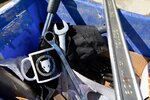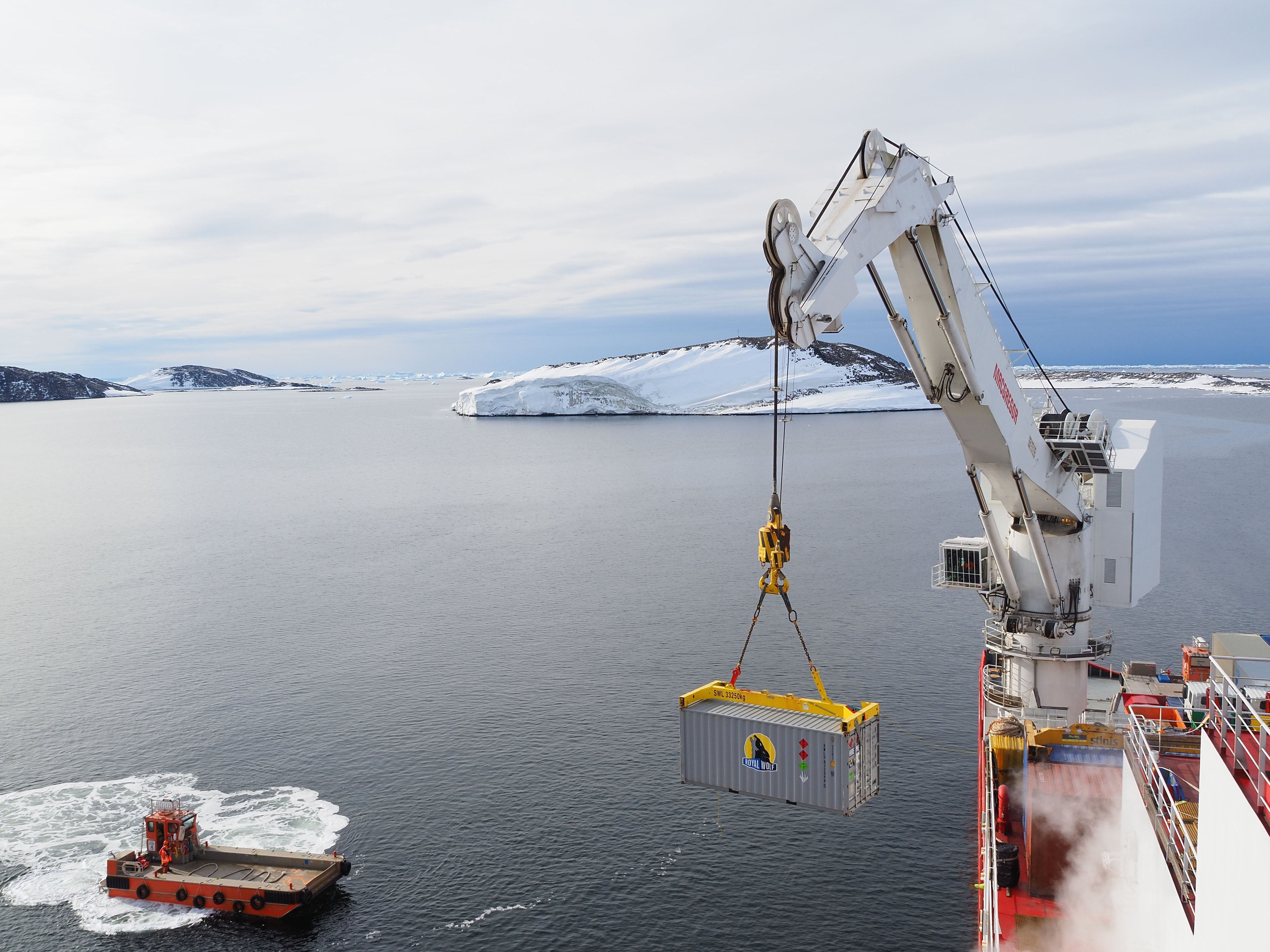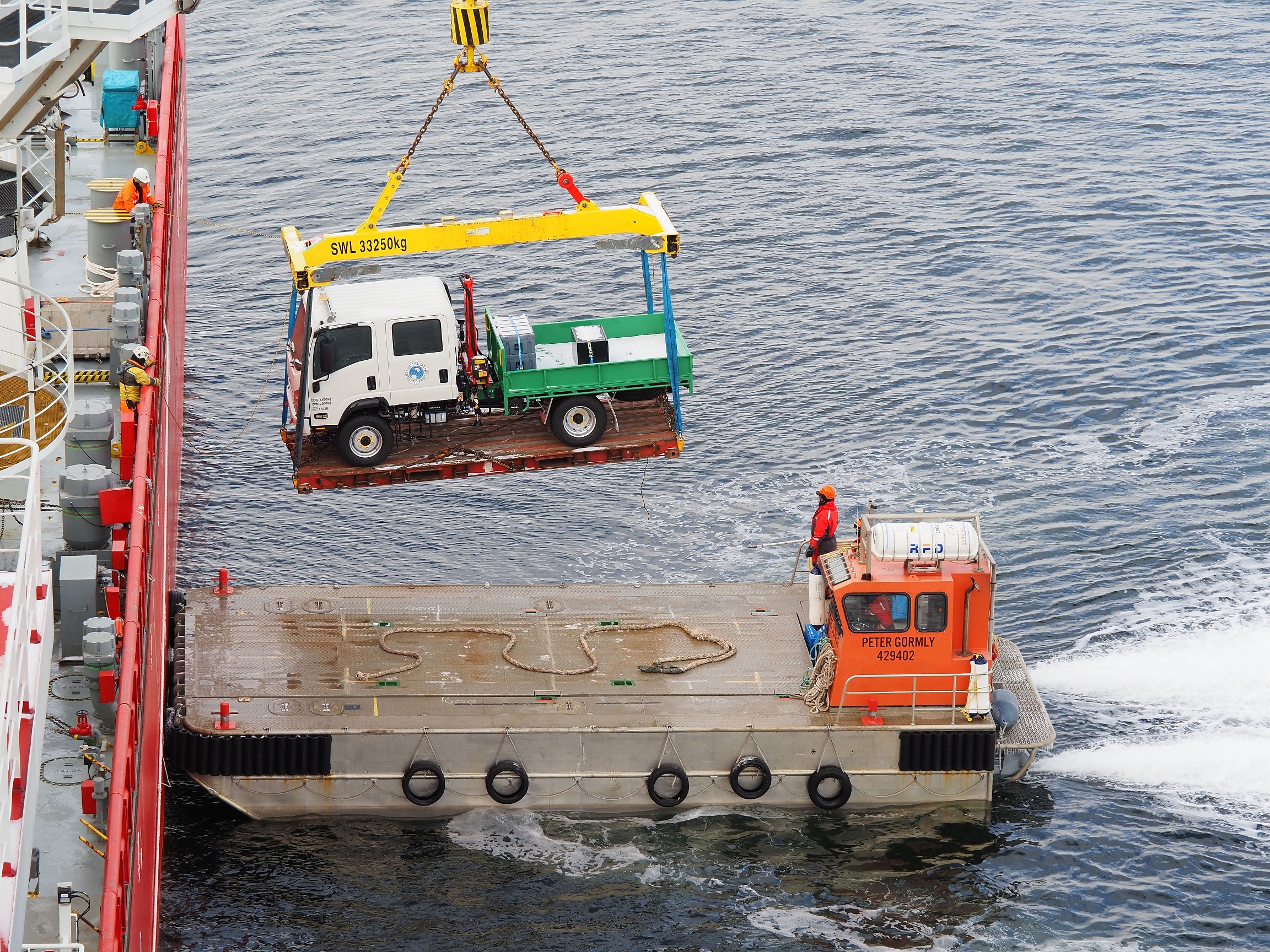Antarctic Refuel Operation is COMPLETE. A lovely gallery of Canonn Interstellar and Fuel Rats mugs that went ashore for refuel operations (and nearly got stolen by the Penguin Overseer).










There's some MEAN weather heading their way 50-100kt winds, so the team on board the MPV Everest nabbed some shots from shore for Canonn and The Fuel Rats and have had to scarper in double quick time ready to reload and then get to their next resupply operation:
"This morning the run of mild weather that had enabled us to complete ship to station refuelling and consecutive days of cargo operations came to an end. Anticipating increasing winds during the morning, our ship's crew, watercraft operators and station teams commenced RTA cargo operations this morning a little after 0800hs. Forecast winds from the East were thought to carry the potential of generating a rapid increase in winds in Newcomb bay disrupting watercraft operations. Regular communications from the bridge to station and to the station's bureau of meteorology staff allowed a running commentary of current and anticipated weather conditions, supplemented by the keen eyes of a number of experienced expeditioners on the bridge keeping a watch on the wind speed averages and surface definition. Before mid-morning, despite 10 minute wind averages remaining low on the water, an increase in local area wind speeds, >25kt wind gusts recorded from the ship, and reducing surface definition on the moraine line informed a conservative decision to suspend boating operations and review the option to stay in Newcomb Bay or depart for Hobart.
By mid-afternoon and with careful consideration of factors including outstanding RTA cargo remaining on station, the condition of sea ice, current route and local area forecasts, a determination was made to conclude resupply operations and depart for Tasmania. At present, the outline of station buildings is gradually receding into a backdrop of dark rock and snow white coastline on an ocean of whitecaps and snow flurries.
The abrupt departure of the ship from Casey this afternoon curtailed our ability to say our goodbyes and thank them for their outstanding efforts in preparing for, and conducting this resupply. Despite the challenges of significantly reduced station numbers, the complexities associated with undertaking resupply activities in accordance with COVID-19 protocols and technical communications issues, the station community under the leadership of Kyle and Dave, maintained their sense of humour and professionalism. We wish the expeditioners at Casey all the very best for a rewarding and safe winter season.
On behalf of our voyage supervisory team we would like to sincerely thank the Master and crew of the MPV Everest, our roundtrip expeditioners aboard the ship, and all on station and in Kingston, Tasmania for their efforts to ensure this resupply was safe and productive.
Regards,
James, Jenn and Andy."










There's some MEAN weather heading their way 50-100kt winds, so the team on board the MPV Everest nabbed some shots from shore for Canonn and The Fuel Rats and have had to scarper in double quick time ready to reload and then get to their next resupply operation:
"This morning the run of mild weather that had enabled us to complete ship to station refuelling and consecutive days of cargo operations came to an end. Anticipating increasing winds during the morning, our ship's crew, watercraft operators and station teams commenced RTA cargo operations this morning a little after 0800hs. Forecast winds from the East were thought to carry the potential of generating a rapid increase in winds in Newcomb bay disrupting watercraft operations. Regular communications from the bridge to station and to the station's bureau of meteorology staff allowed a running commentary of current and anticipated weather conditions, supplemented by the keen eyes of a number of experienced expeditioners on the bridge keeping a watch on the wind speed averages and surface definition. Before mid-morning, despite 10 minute wind averages remaining low on the water, an increase in local area wind speeds, >25kt wind gusts recorded from the ship, and reducing surface definition on the moraine line informed a conservative decision to suspend boating operations and review the option to stay in Newcomb Bay or depart for Hobart.
By mid-afternoon and with careful consideration of factors including outstanding RTA cargo remaining on station, the condition of sea ice, current route and local area forecasts, a determination was made to conclude resupply operations and depart for Tasmania. At present, the outline of station buildings is gradually receding into a backdrop of dark rock and snow white coastline on an ocean of whitecaps and snow flurries.
The abrupt departure of the ship from Casey this afternoon curtailed our ability to say our goodbyes and thank them for their outstanding efforts in preparing for, and conducting this resupply. Despite the challenges of significantly reduced station numbers, the complexities associated with undertaking resupply activities in accordance with COVID-19 protocols and technical communications issues, the station community under the leadership of Kyle and Dave, maintained their sense of humour and professionalism. We wish the expeditioners at Casey all the very best for a rewarding and safe winter season.
On behalf of our voyage supervisory team we would like to sincerely thank the Master and crew of the MPV Everest, our roundtrip expeditioners aboard the ship, and all on station and in Kingston, Tasmania for their efforts to ensure this resupply was safe and productive.
Regards,
James, Jenn and Andy."






